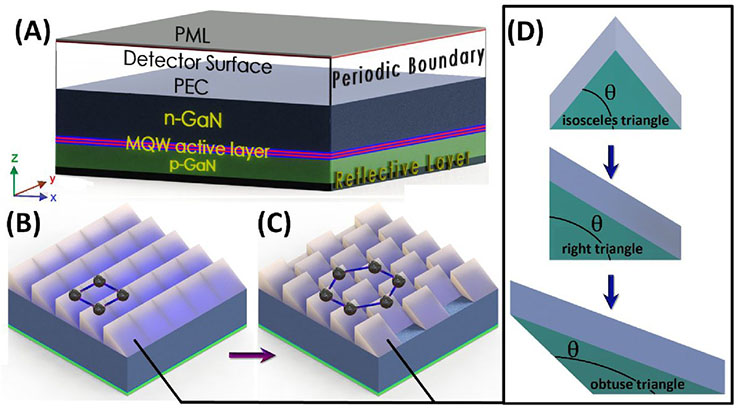Improved LED Light Extraction Efficiency via Substrate Microstructure
ID# 2016-4514
Technology Summary
LED materials have a high refractive index and a portion of the emitted light remains trapped in the active area, which lowers the light extraction efficiency. A novel method has been devised for allowing light trapped in the active area of an LED to escape, improving the efficiency of the LED with no increase in power consumption. This method employs the creation of asymmetric obtuse angle microstructures on the substrate and/or exit surface. This structure has unique features: first, with the same height-to-base aspect ratio, the asymmetric microstructured substrate has a larger surface area than that of a symmetric microstructured substrate; second, the deflection angle of the microstructured substrate is a function of location, which can increase light extraction efficiency. This new design can result in light extraction efficiencies up to 70.4% – more than 10% over current methods.
Application & Market Utility
This technology can be broadly deployed in any application for which LEDs are currently used, including general lighting, traffic signals, camera flashes, aviation lighting, and automotive headlamp modules. Light extraction efficiency is increased up to 10% over current designs, which will ultimately result in brighter LEDs with no increase in energy usage and at a comparable cost to current LEDs. The design change can be readily incorporated into existing manufacturing processes using standard processing methods without significantly increasing manufacturing costs.
Next Steps
Seeking research collaboration and licensing opportunities.

